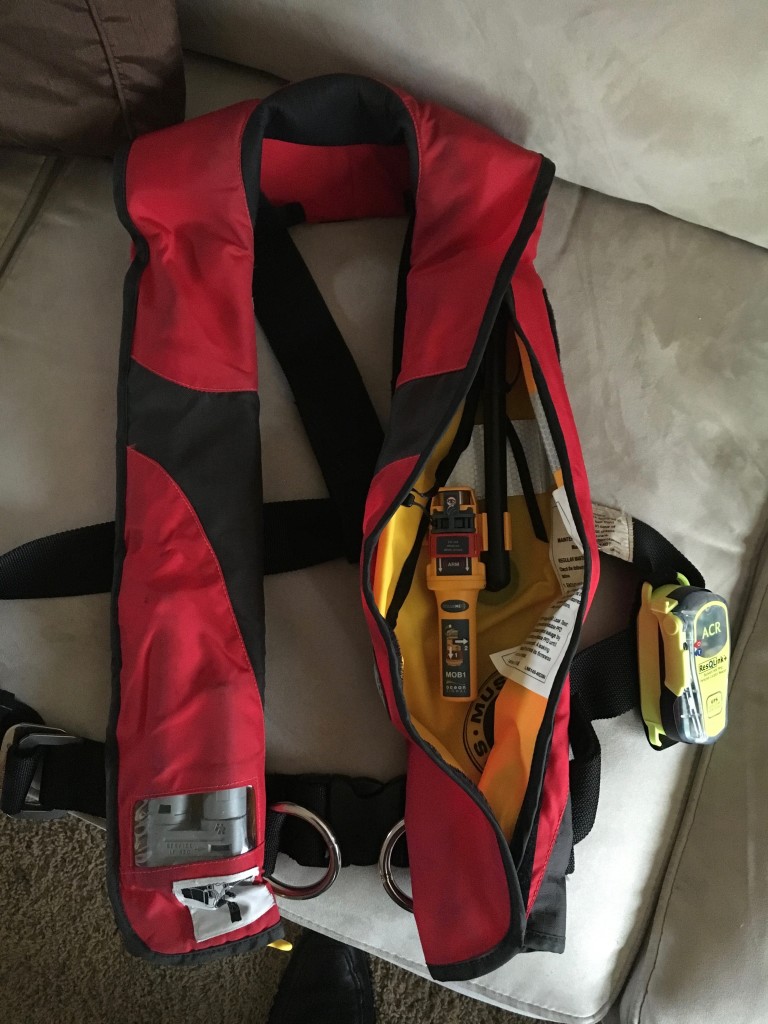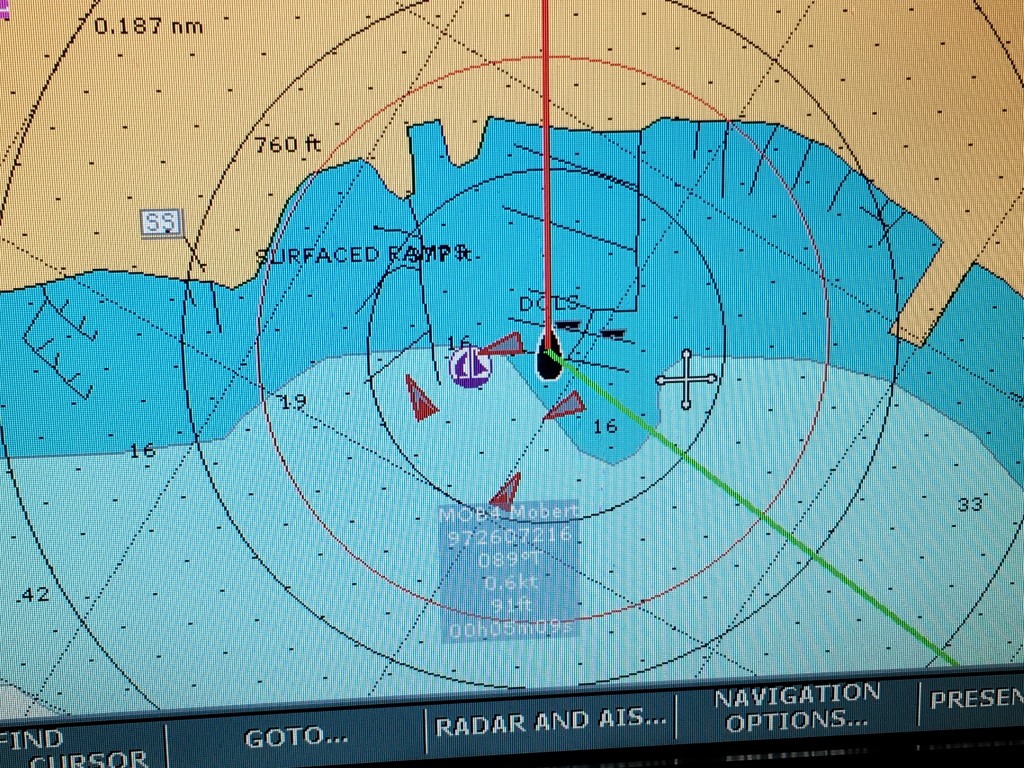How the AIS-SART Shows up on screen
Yesterday I successfully tested the VHF-DSC and AIS transmission features of the OceanSignal MOB1 attached to one of our lifejackets.

First the DSC test sent a DSC Individual call from the MOB1 directly to the VHF radio on our boat. Our Icom Ic-m422 VHF radio first beeped slowly at low volume and then started getting louder and louder. The screen showed “DSC INDIVIDUAL CALL” during this time. My assumption is that since this was a test, that the MOB1 doesn’t use the “DISTRESS” message since that could set off loud alarms on other boats and also alert the Coast Guard.
In the second test the MOB1 sent an AIS position. I added the MMSI numbers of all of our MOB1s as AIS Buddies in our Raymarine E80 chart plotter and assigned friendly names “MOB1 Mobert”, “MOB2 Mobert”, etc.. This way I could easily see and identify them on the screen. Once the AIS test completed it showed up on the screen as expected.
Note in this image the on screen text identifying the MOB1 that sent the transmission and it’s proximity to our boat.

In the AIS test, It took the MOB1 about 60 seconds to fire up it’s internal GPS receiver to get a position and then send that position out. If this was not a test, it would first send the DSC Distress transmission, while waiting for a GPS fix, then send the AIS position. It will continually transmit the AIS position and periodically resend the DSC Distress until powered off.
Looks like it works!





I’d love to see the pictures in this post but they’re not loading.
Not sure why they aren’t loading for you.. I’m emailing you a PDF of the post